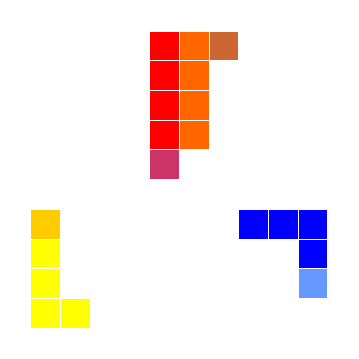
Lunda-animal is a Lunda 5-omino with one unit square at one of its ends representing a head. A Lunda-animal walks in such a way that after each step the head occupies a new unit square, and each other cell occupies the preceeding one. In other words, two subsequent positions of a Lunda-animal have a Lunda-tetromino in common.
How many different positions p5(n)
of a Lunda 5-omino are possible after n steps?
P.Gerdes proved that: